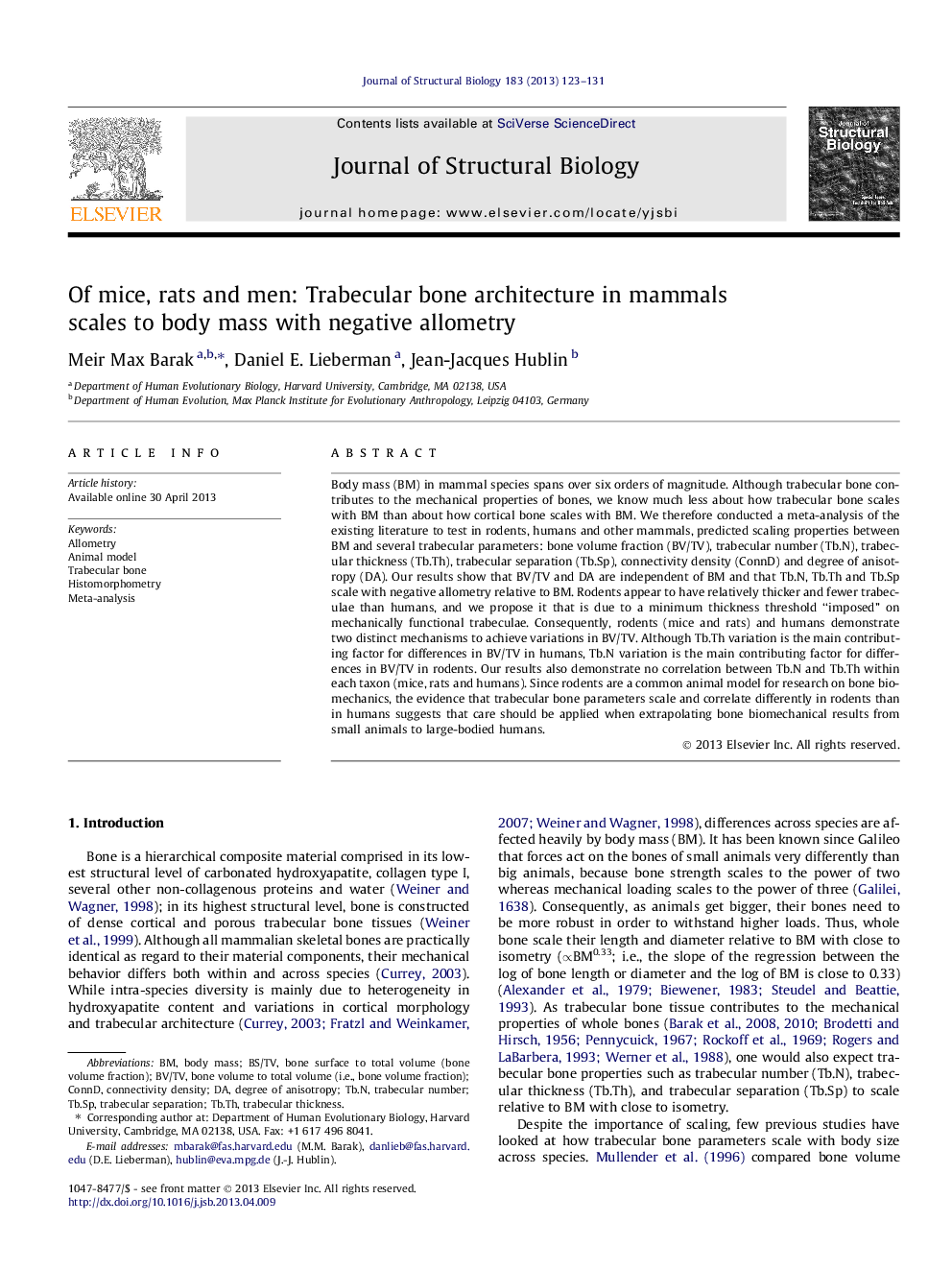| Article ID | Journal | Published Year | Pages | File Type |
|---|---|---|---|---|
| 5914286 | Journal of Structural Biology | 2013 | 9 Pages |
Abstract
Body mass (BM) in mammal species spans over six orders of magnitude. Although trabecular bone contributes to the mechanical properties of bones, we know much less about how trabecular bone scales with BM than about how cortical bone scales with BM. We therefore conducted a meta-analysis of the existing literature to test in rodents, humans and other mammals, predicted scaling properties between BM and several trabecular parameters: bone volume fraction (BV/TV), trabecular number (Tb.N), trabecular thickness (Tb.Th), trabecular separation (Tb.Sp), connectivity density (ConnD) and degree of anisotropy (DA). Our results show that BV/TV and DA are independent of BM and that Tb.N, Tb.Th and Tb.Sp scale with negative allometry relative to BM. Rodents appear to have relatively thicker and fewer trabeculae than humans, and we propose it that is due to a minimum thickness threshold “imposed” on mechanically functional trabeculae. Consequently, rodents (mice and rats) and humans demonstrate two distinct mechanisms to achieve variations in BV/TV. Although Tb.Th variation is the main contributing factor for differences in BV/TV in humans, Tb.N variation is the main contributing factor for differences in BV/TV in rodents. Our results also demonstrate no correlation between Tb.N and Tb.Th within each taxon (mice, rats and humans). Since rodents are a common animal model for research on bone biomechanics, the evidence that trabecular bone parameters scale and correlate differently in rodents than in humans suggests that care should be applied when extrapolating bone biomechanical results from small animals to large-bodied humans.
Keywords
Related Topics
Life Sciences
Biochemistry, Genetics and Molecular Biology
Molecular Biology
Authors
Meir Max Barak, Daniel E. Lieberman, Jean-Jacques Hublin,
